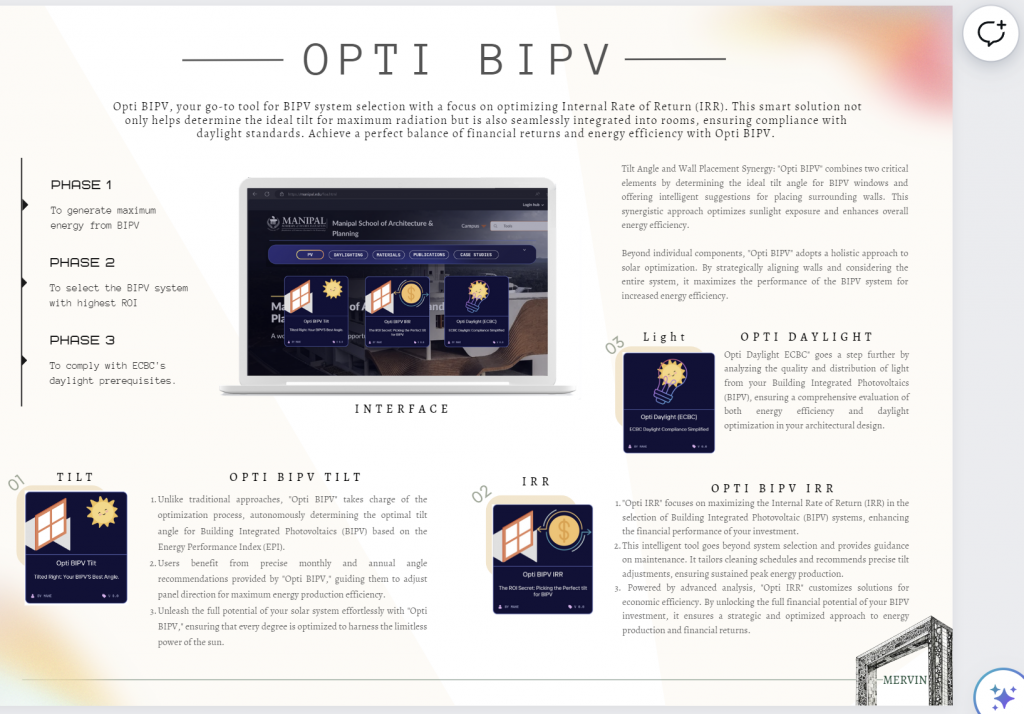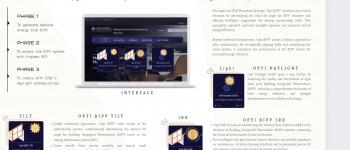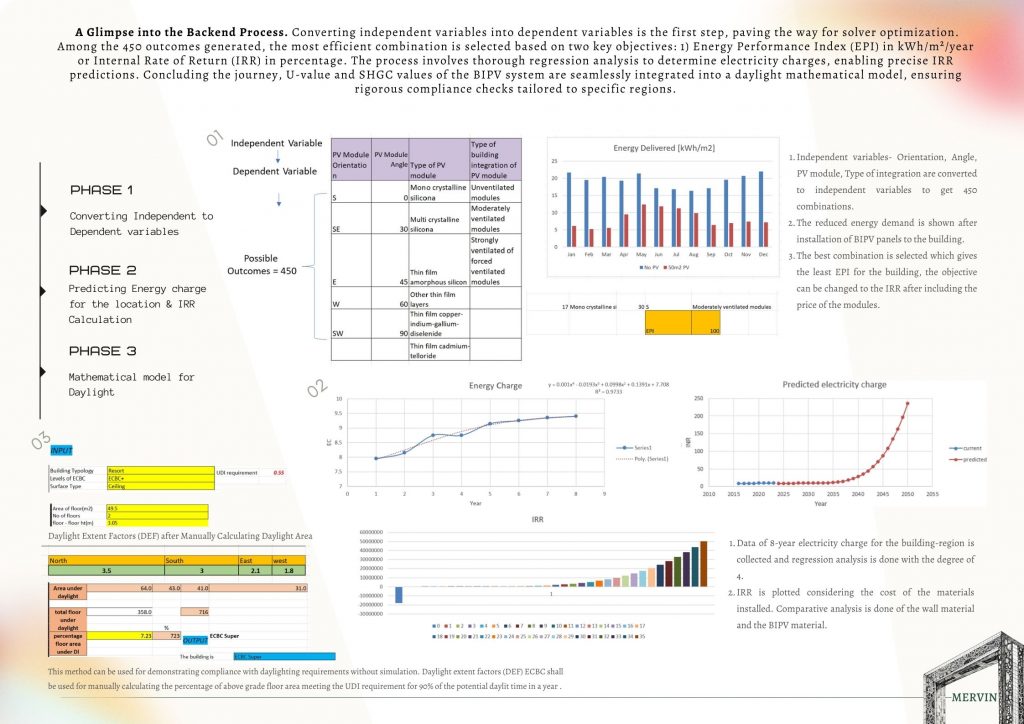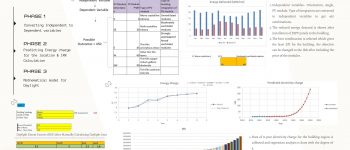PV Tools: Opti Tilt, Opti IRR
“Opti Tilt” is the next evolution in solar panel optimization. In contrast to PV Watts, which relies on default angle settings, “Opti Tilt” empowers users to automatically determine the ideal tilt angle for their solar panels keeping EPI as objective. This innovative tool provides precise monthly and annual angle recommendations, ensuring maximum energy production. Unleash the full potential of your solar system with precision and efficiency—because every degree counts when it comes to harnessing the power of the sun.
“Opti IRR” transforms PV system selection, prioritizing the highest Internal Rate of Return (IRR). It’s more than just choosing a system—it offers guidance on maintenance, from cleaning schedules to tilt adjustments for peak energy production. Powered by advanced regression analysis, “Opti IRR” considers energy rates and regional development, providing a customized, efficient, and economically sound solution for your solar investment. Get ready to unlock the full potential of your PV system’s financial returns.
Abstract
PV system efficiency peaks when solar panels are aligned perpendicularly to incident radiation. Therefore, while solar trackers are the most efficient, their economic feasibility is questionable due to higher upfront and operational costs. Solar panels require maintenance due to dust/soiling impacting efficiency,and adjusting tilt angles six times annually captures 99.5 percent of solar radiation. Hence, this study aims to identify optimal monthly and seasonal angles for further economic evaluation. Addressing the need for a computationally efficient tool, this research develops a mathematical model that utilizes the Energy Performance Calculator (EPC). It determines the optimal tilt angle for solar panels using data extracted from the EnergyPlus Weather (EPW) data file to find the optimal placement of solar panels, allowing for further modifications, but not limited to, shading, albedo, BIPV, environment, and architectural variables. The analysis contrasts the EPC model with other solar geometry models, presenting a 3rd-order polynomial fit that correlates the ideal tilt to latitude for Rooftop PV and BIPV. The study underscores the importance of calculating precise tilt angles for accurate results in their respective locations.
To make sustainability free for all, ensuring that every child has access to education on sustainability and providing all students with the tools and knowledge to become leaders in building a sustainable future.
Mission
To create and provide free innovative tools and resources.
Objective
To design and develop a simple tool that optimizes photovoltaic (PV) systems with the primary objective of maximizing the Internal Rate of Return (IRR)
The core issue addressed in this research is the optimization of photovoltaic (PV) system efficiency through the identification of economically and environmentally favorable tilt angles for solar panels. The challenge lies in the conventional fixed tilt angles, which can lead to efficiency losses, impacting the overall energy harnessing capabilities of solar panels.
To tackle this issue, our approach involves the development of a comprehensive mathematical model integrated into buildings. This model considers various influential factors, including shading, albedo, and environmental variables. By leveraging data from the Energy Performance Calculator and EnergyPlus Weather, we aim to pinpoint optimal monthly and seasonal tilt angles. These angles are crucial for conducting thorough economic evaluations of different solar panel systems.
The significance of our approach lies in its potential to provide a precise, open-source tool for consultants. This tool will facilitate site-specific recommendations, enabling informed decision-making for the selection of the most suitable and efficient solar systems across diverse locations. In essence, our research aims to contribute to the advancement of solar energy efficiency by offering a practical and economically viable solution to optimize PV system tilt angles.
Dr. Gustavo Carneiro - Developer of EPC [HBPL-Georgia Institute of Technology (Gtech)]
Dr. Pranav Kishore [ IIM Lucknow]




